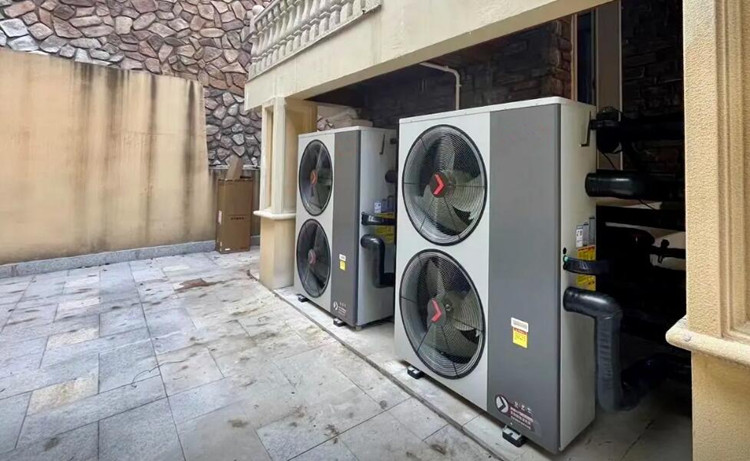What is the Difference Between a Cascade Air Source Heat Pump and an Air Source Heat Pump?
There are significant differences between cascade air source heat pumps and common air source heat pumps in many aspects.
1. In terms of working principle
common air source heat pumps achieve heat transfer through a single compression cycle, while cascade air source heat pumps use a two-stage compression cycle, consisting of two cycles: a low-temperature stage and a high-temperature stage. The low-temperature stage cycle is responsible for absorbing heat from the low-temperature heat source, and then raising the heat to a higher temperature level through the high-temperature stage cycle to meet user needs. This two-stage cycle design makes the cascade air source heat pump relatively efficient in energy conversion and can more effectively utilize heat in a low-temperature environment.

2. Performance
The heating performance of the cascade air source heat pump in a low-temperature environment is better than that of the common air source heat pump. The heating capacity and energy efficiency ratio of common air source heat pumps will decrease significantly as the ambient temperature decreases, while the heating capacity of the cascade air source heat pump has a smaller attenuation range and can operate stably at a lower temperature. For example, at an ambient temperature of -30°C, a conventional heat pump may require a larger model to meet the heating demand, while a cascade unit can maintain a good heating effect. In addition, a cascade air source heat pump can provide hot water at a higher temperature, which is suitable for occasions with high requirements for hot water temperature.
3. Application scenarios
Conventional air source heat pumps are suitable for areas with milder climates, while cascade air source heat pumps are more suitable for heating needs in cold areas. In cold areas, the energy efficiency of common air source heat pumps is low and may not meet the heating needs, while cascade air source heat pumps can stably heat in extremely cold weather to ensure indoor warmth.
4. Cost
The investment cost of a cascade air source heat pump is higher than that of an common air source heat pump because its system is more complex, including two compression cycles and more components. In terms of operating costs, due to its high energy efficiency in low temperature environments, the long-term operating cost of a cascade air source heat pump in cold areas may be lower. common air source heat pumps have a lower initial investment, but their operating efficiency is low in low temperature environments, which may lead to increased energy consumption.
5. Maintenance
Common air source heat pumps have a simple structure, are relatively easy to maintain, and have low maintenance costs. However, cascade air source heat pumps have a complex structure and are difficult to maintain. They require professional technicians to maintain them, and the maintenance costs are relatively high. In addition, the cascade air source heat pump may affect the stability and energy consumption of the system during the defrosting process.





